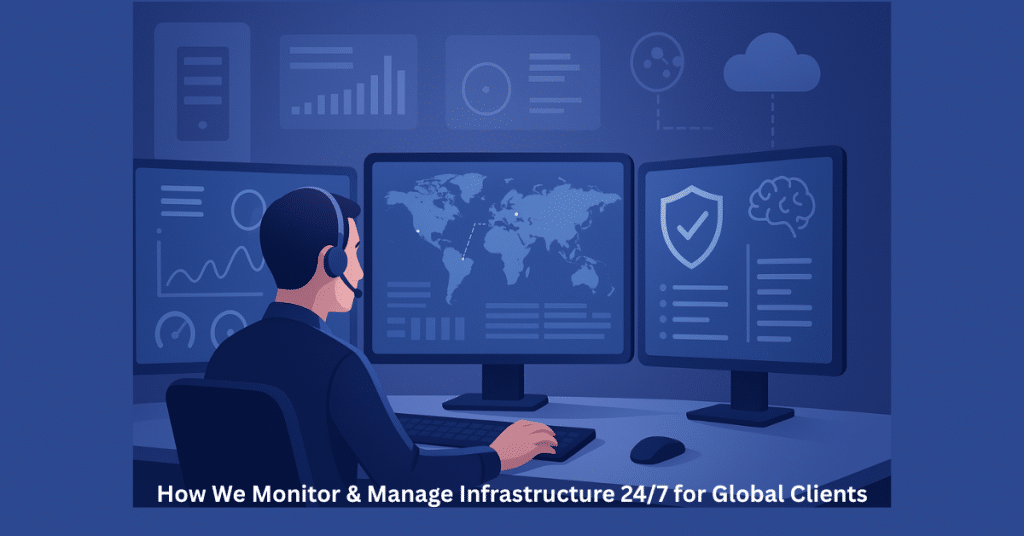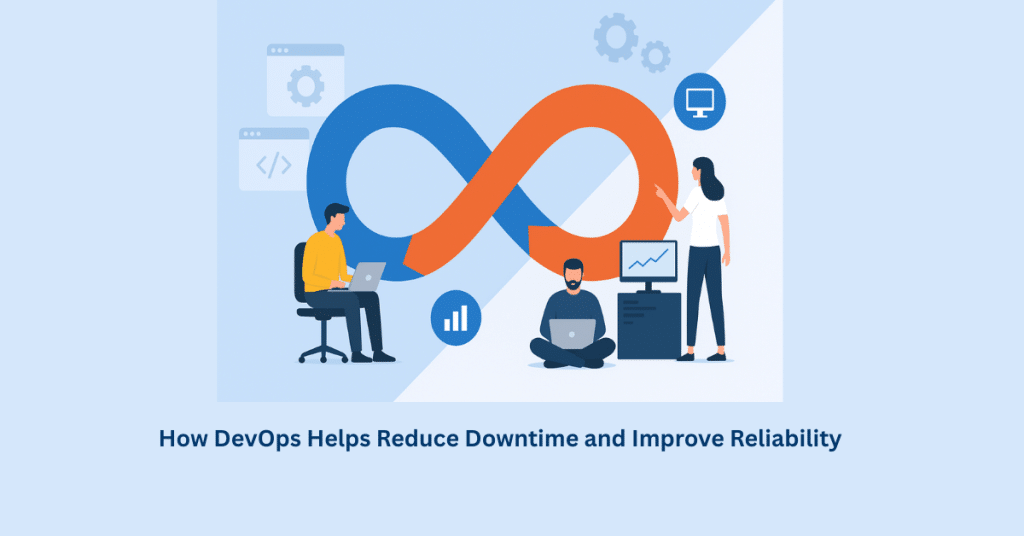Site Reliability Engineering (SRE) is a critical discipline that blends software engineering with IT operations, focusing on creating scalable and highly reliable software systems. As digital infrastructures become more complex, understanding the fundamentals of SRE has never been more essential for maintaining system performance and availability. This blog delves into the core principles and practices of SRE, offering key insights into how organisations can build and maintain reliable systems while effectively managing operational challenges.
Engineering with IT Operations. It came to Google to manage the large-scale, highly available services that power the company’s products. SRE focuses on building scalable and reliable software systems by applying software engineering principles to infrastructure and operations problems.
Now we’ll break this team down into the various key skills that hold them together.
Within IT Operations and Software Engineering, SRE (Site Reliability Engineering) and Application Support are distinct but closely linked fields.While both focus on ensuring availability, reliability and performance of software systems, they have different areas of emphasis and responsibilities.
SRE (Site Reliability Engineering)
Automating operations tasks, enhancing system reliability, and upholding Service Level Objectives (SLOs) for vital services are the key goals of SRE.
Scalable, dependable, and maintainable infrastructure and services are created by SREs using software engineering concepts.
They work closely with development teams to design and deploy flexible architectures, establish monitoring and alerting systems, and implement automated incident response mechanisms. Additionally, to pinpoint the underlying causes of failures and improve system reliability, SREs carry out flawless post-incident reviews or PIRs.
Applications support
Application support teams are responsible for ensuring certain software programs are available and function properly. They address user concerns, diagnose technological problems, and offer prompt fixes to reduce downtime and disturbance. Application functionality, configuration, and dependencies are often well-versed by application support engineers. In addition to providing user support and training, they might handle duties like patching, upgrading, configuring, and installing apps.
When it comes to the relationship between SRE and application support, an application support team’s efficiency can be significantly increased by following SRE ideas and practices:
Automation:
Automation is emphasised in SRE methods to eliminate manual intervention and streamline operations. Application support teams may speed up routine processes such as deployment, configuration management, and troubleshooting by utilising automation tools and scripts.
Monitoring and Alerting:
To identify and proactively address issues, SREs concentrate on putting in place strong monitoring and alerting systems. Application support teams can obtain early warnings of potential issues and prioritise their response by including these technologies for monitoring in their workflow.
Incident Response:
SRE practices emphasise rapid incident response and resolution. Application support teams can adopt incident management practices such as incident triage, escalation procedures, and post-incident analysis to improve their response time and minimise service disruptions.
Reliability Engineering:
By applying reliability engineering principles, application support teams can proactively identify and address potential points of failure in their applications. This includes implementing fault tolerance mechanisms, capacity planning and conducting resiliency testing to ensure high availability and performance.
By integrating SRE practices into application support workflows, organisations can improve their efficiency, reduce downtime, and enhance user experience.
Environmental support
The maintenance of an organisation’s production environment through SRE (Site Reliability Engineering) environment support involves making sure that the services and infrastructure are scalable, reliable, and perform well. SREs utilise operational, systems, and software engineering techniques to accomplish these objectives. The assistance provided by SRE environments is broken down as follows:
Provision and configuration of infrastructure:
The provisioning and configuration of the underlying infrastructure needed to host applications and services falls under the purview of SREs. In both on-premises and cloud settings, this entails configuring servers, networks, storage, and other resources.
The provisioning and configuration process is frequently automated with the help of Infrastructure as Code (IaC) tools like Terraform, Ansible, or Puppet, which guarantee consistency and repeatability.
Deployment Automation:
To ensure that changes to the environment, such as new code releases or configuration upgrades, are rolled out safely and effectively, SREs automate the deployment process.
The build, test, and deployment phases of the software development lifecycle are automated by a continuous integration/continuous deployment (CI/CD) pipeline, allowing for the rapid and reliable delivery of changes.
Monitoring and alerting
SREs put up warning and monitoring systems to track environmental performance and health in real-time. This includes collecting information on user experience, application performance, and resource consumption metrics as well as configuring alerts to inform teams of possible problems.
Prometheus, Grafana, Datadog, and New Relic are a few examples of tools that are frequently used for monitoring and alerting; they offer visibility into the condition of the environment and facilitate proactive problem-solving.
Incident Management:
Responding to incidents that compromise the environment’s performance or availability is the responsibility of SREs. As soon as possible, service restoration, coordination of response activities, and incident triaging are all included in this.
To ensure that events are successfully resolved and that lessons are learnt for future prevention, incident management procedures including incident setting priorities, escalation, and post-incident analysis (PIR) are followed.
Planning Capacity and Optimising Performance:
To make sure the environment can handle the existing and anticipated levels of traffic and workload, SREs carry out capacity planning. This involves monitoring patterns in the use of resources, predicting demand, and allocating resources as necessary to satisfy performance standards.
To increase overall system performance and reliability, performance optimization initiatives concentrate on locating and resolving bottlenecks, inefficiencies, and scaling limitations in the environment.
Safety and Compliance:
To make sure the environment satisfies security and compliance requirements, SREs work in tandem with security teams. This entails putting industry rules and standards into effect, conducting vulnerability assessments, and putting security best practices into action.
To safeguard confidential information and stop illegal access or security breaches, security measures like audit logging, encryption, and access controls are put in place. The maintenance of a robust and stable infrastructure that permits the dependable provision of services to end users is known as SRE environment support. SREs use automation tools and software engineering concepts to reduce downtime, reduce risks, and constantly enhance environment performance and dependability.
Management of Change
The goal of change management in Site dependability Engineering (SRE) is to reduce delays and maintain dependability by applying changes to production systems in a controlled and methodical manner. The way SRE performs change management is as follows:
Modification of Approval Procedure:
To assess suggested modifications before their implementation in production, SRE teams set up a formal change approval process. This procedure usually entails presenting modification requests, evaluating the risk and impact of those requests, and getting the go-ahead from pertinent parties.
Analysis of Risk:
To determine the possible effects of suggested changes on system performance, security, and reliability, SREs carry out risk assessments.This entails examining elements including the change’s complexity, interdependence, and propensity to cause disruptions.
Validation and Testing:
SREs thoroughly test and validate changes in pre-production settings before deploying them to production to make sure they work as intended and don’t generate regressions or unexpected behaviours.
Unit tests, integration tests, and end-to-end tests are examples of automated testing frameworks that are used early in the development process to validate changes and find any potential issues.
Analysis of Risk:
To determine the possible effects of suggested changes on system performance, security, and reliability, SREs carry out risk assessments. This entails examining elements including the change’s complexity, interdependence, and propensity to cause disruptions.
Validation and Testing
SREs thoroughly test and validate changes in pre-production settings before deploying them to production to make sure they work as intended and don’t generate regressions or unexpected behaviours.
Unit tests, integration tests, and end-to-end tests are examples of automated testing frameworks that are used early in the development process to validate changes and find any potential issues.
In a world where digital services are crucial to business success, mastering the fundamentals of Site Reliability Engineering is vital. By embracing SRE principles, organisations can achieve a balance between rapid development and operational stability, ensuring that their systems remain resilient under pressure. The insights and expertise shared in this blog aim to guide teams in implementing SRE practices effectively, leading to more reliable and scalable systems. As SRE continues to shape the future of IT operations, a deep understanding of its fundamentals will be key to staying ahead in the digital age.




